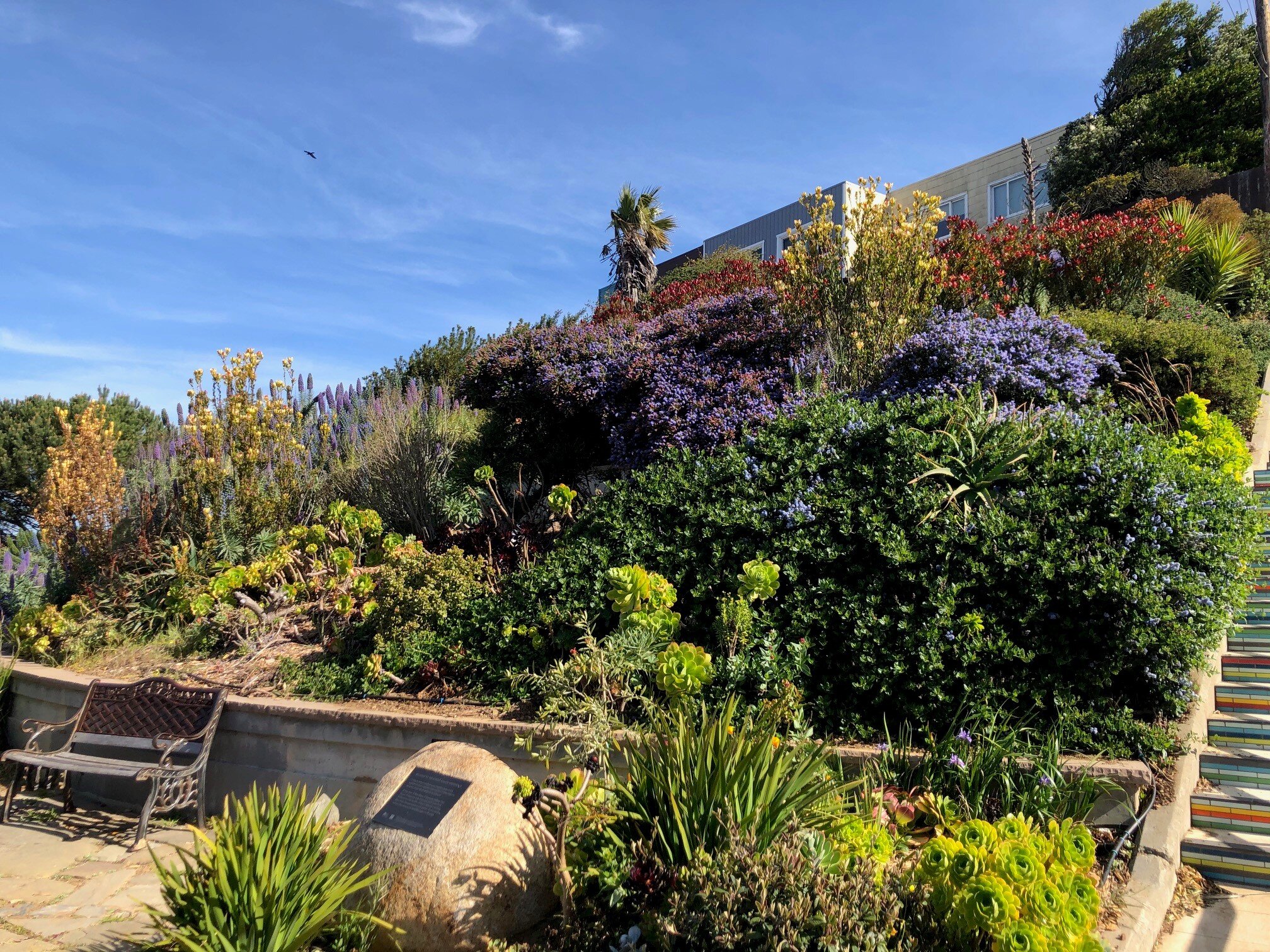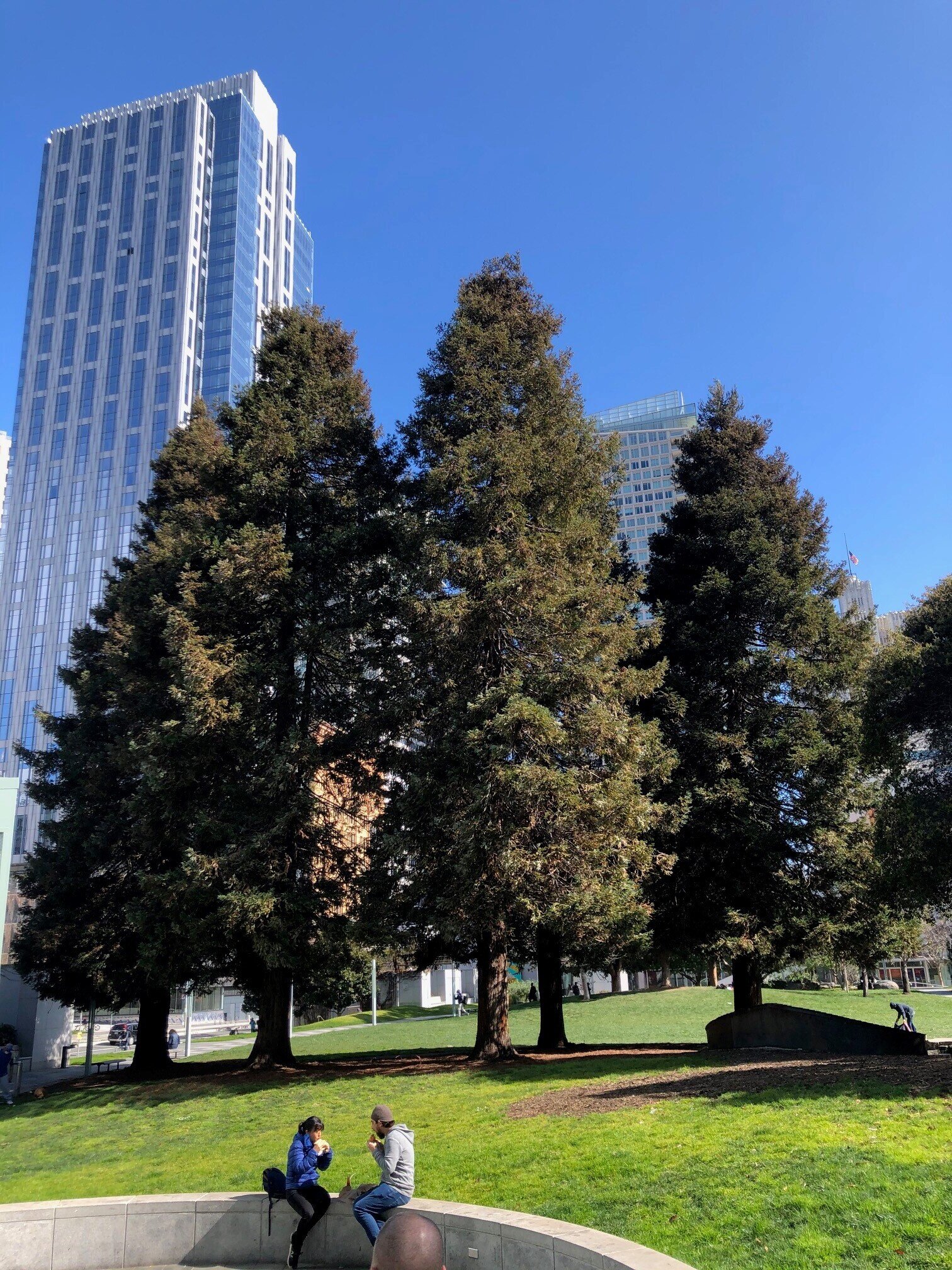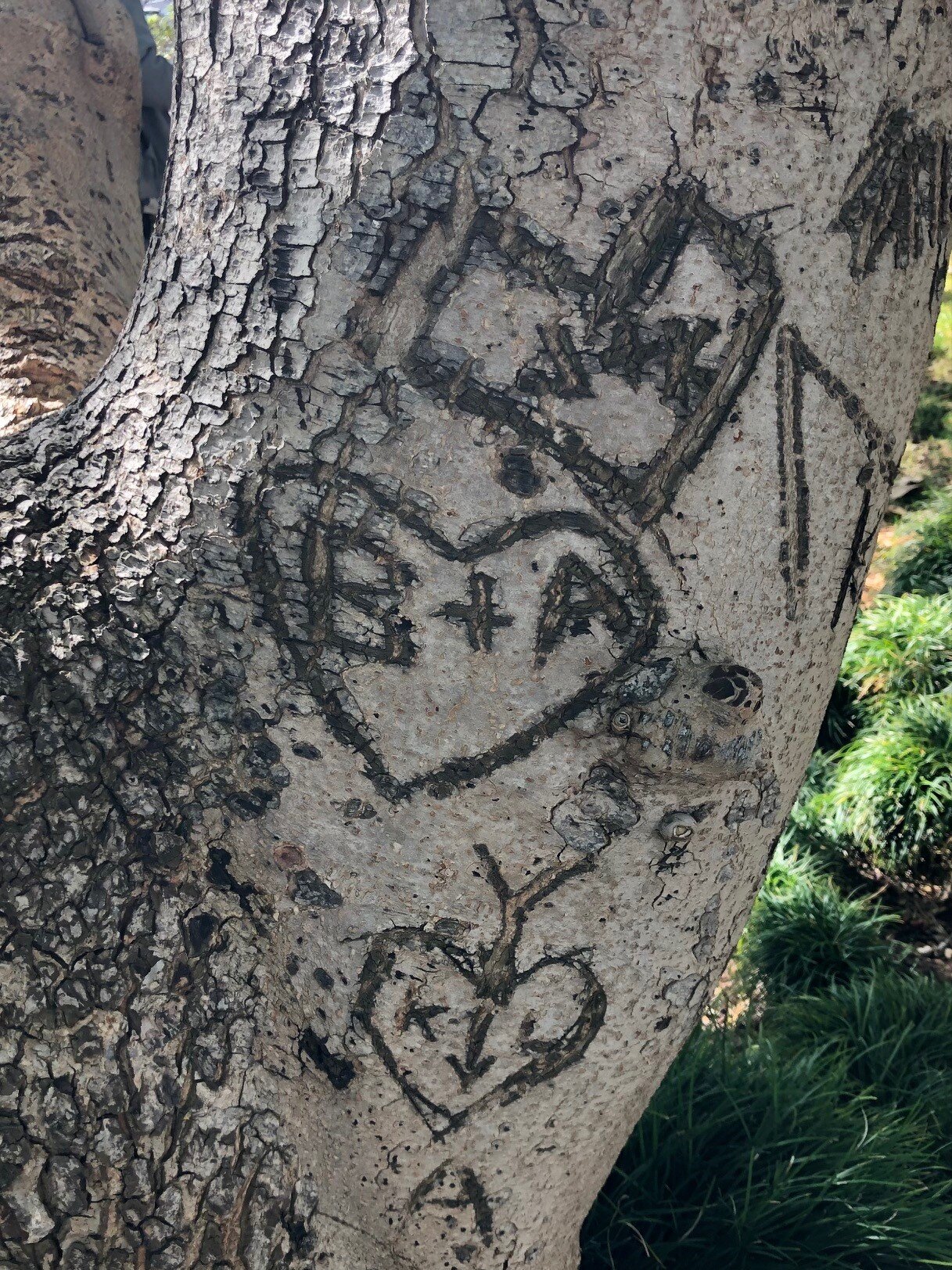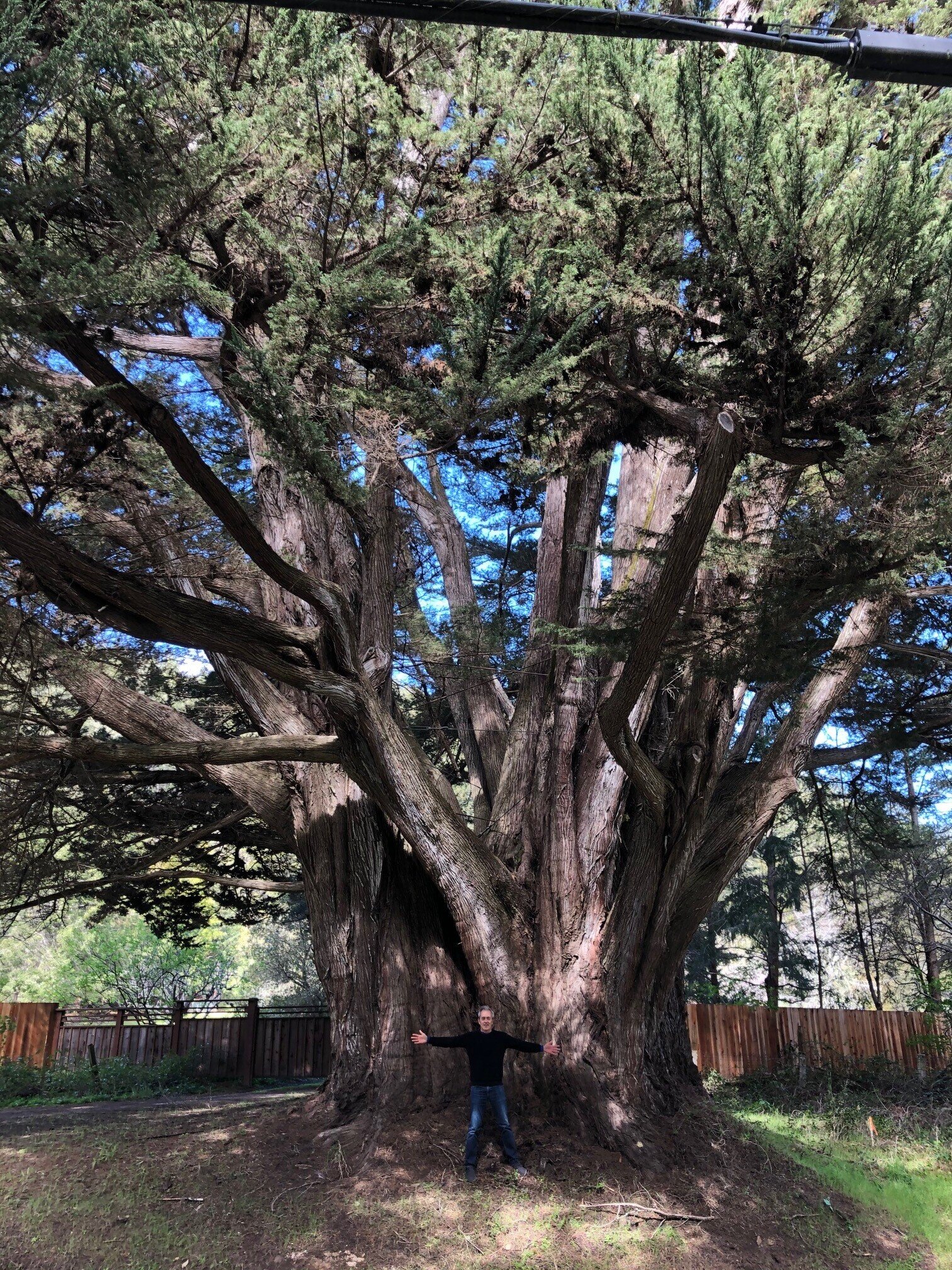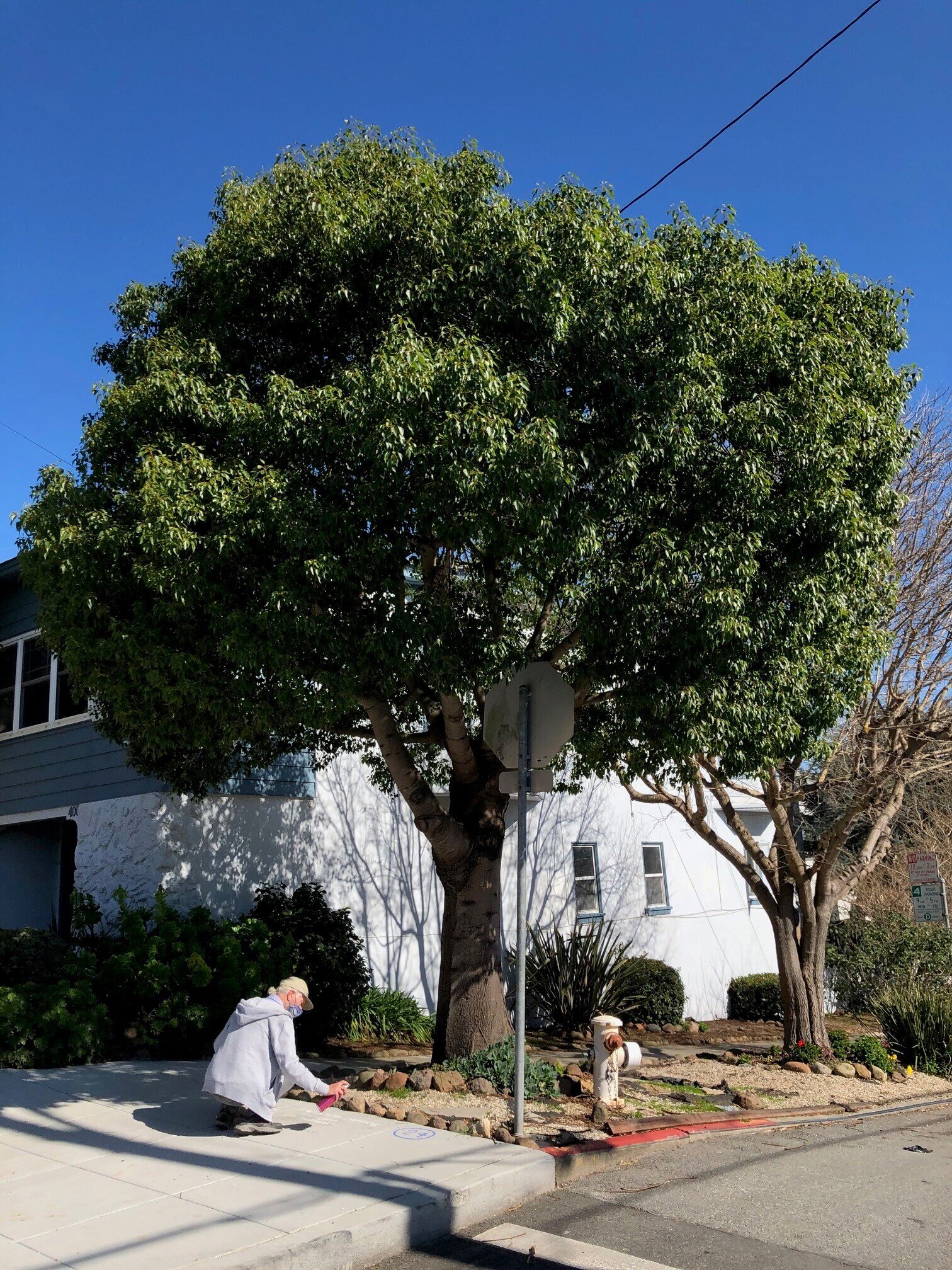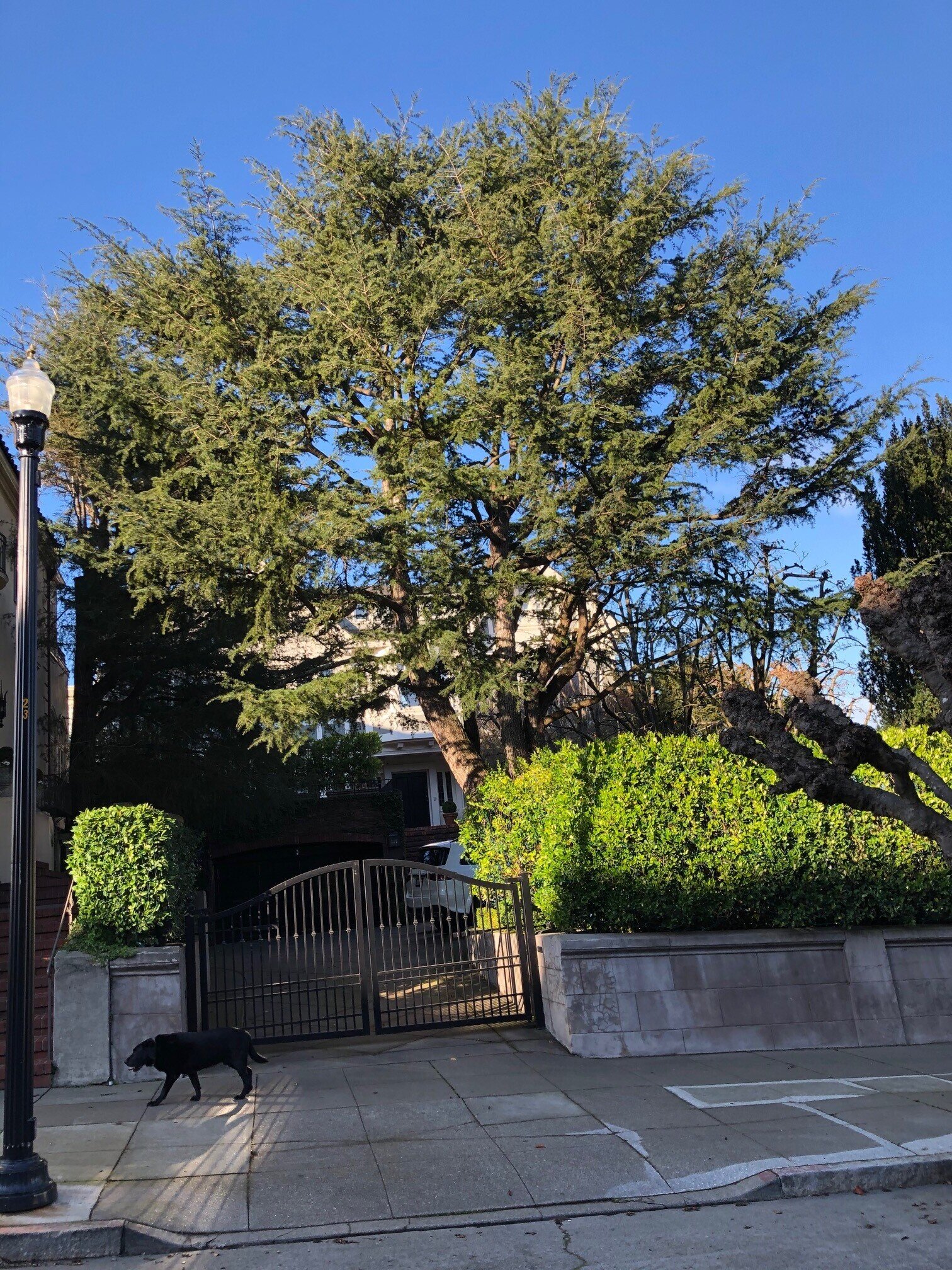*Note: the next five trees are actually on Joost, along the side of 400 Congo)
24. 400 Congo Kurrajong (Brachychiton populneus), eastern Australia
25. 400 Congo Hackberry (Celtis species)
26. 400 Congo Mimosa (Albizia julibrissin), Iran
27. 400 Congo Mulberry (Morus species)
28. 400 Congo Blue Atlas cedar (Cedrus atlantica ‘Glauca’), Morocco and Algeria
29. 268 Joost Peppermint willow (Agonis flexuosa),southwest Australia
30 266 Joost Peruvian pepper tree (Schinus molle), Peru, Chile
31. 262 Joost Brisbane box (Lophostemon confertus), eastern Australia
**Head up the steps through the Mini-Park, almost to Mangles Avenue**
Within the Mini-Park, on right or left of steps
31B. (left) Coffeeberry (Frangula californica), CA native, including San Francisco
32. (left) Champak (Magnolia champaca) South and southeast Asia (flowers are fragrant)
33. (left) Flowering cherry (Prunus serrulata), E Asia
34. (right) English or cherry laurel, English laurel (Prunus laurocerasus), Black Sea (this species and the next one were originally part of a hedge that has been allowed to grow beyond its original bounds)
35. (right) Portugal laurel (Prunus lusitanica), France to Portugal and Morocco
36. (left) Islay (Prunus ilicifolius), San Francisco native tree (the namesake of Islais Creek in Glen Canyon)
37. (left) Toyon (Heteromeles arbutifolia), CA native, including San Francisco
38. (left) Grapefruit tree (Citrus x paradisi), hybrid of two other citrus: sweet orange and pomelo (within the yard to the west)
39. (right) Ray Hartman ceanothus (Ceanothus ‘Ray Hartman’), hybrid of CA native species
40. (right) Hopseed tree (Dodonaea viscosa ‘Purpurea’), native throughout tropical and subtropical parts of the world (this was likely a hedge planting originally)
















































